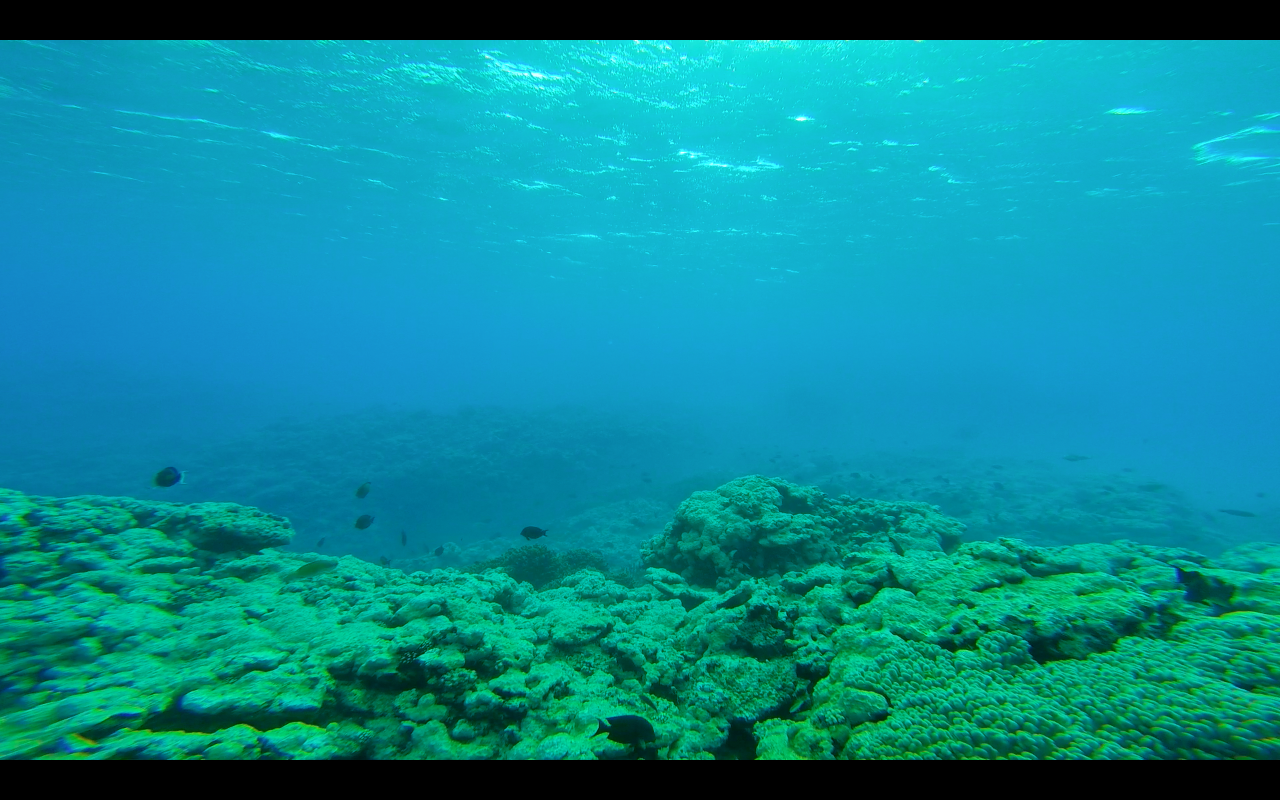Today the AARR team set out to conduct the first reef surveys using ROVs on Aitutaki. The beginning of the day started out a little rough with one of the ROVs flooding which forced the team to return to base to grab the back up unit. Once back underway, a total of five surveys were successfully completed, four of which were within the lagoon and one outside along the edge. Average transect length was 35 m with the duration of the surveys lasting approximately 2 minutes. Depth, water temperature, and heading of transects were recorded with an onboard inertial measurement unit (IMU). Average depth of the surveys was 3.64 m, average temperature was 23.9 Celsius, and average heading was to the North (with the current). Surveys were conducted on all sides of the island (north, south, east, and west) to determine if there is a difference in fish abundance and species richness.
A preliminary analysis of the videos showed the reef area outside of the lagoon had the highest fish abundance and potentially the highest species richness. Also, the surveys on the east side of the island appeared to have the lowest abundance and richness overall. However, a more thorough examination of the videos followed by a statistical analysis is required to confirm these assertions.
The unit that flooded was flushed with freshwater to remove salt from the electronics and dried the rest of the day. This evening we put it back together to see if it would turn on, which luckily it did! The unit was outfitted with the bio-fluorescent sensory package once again will be launched to look for fluorescing coral later tonight.





